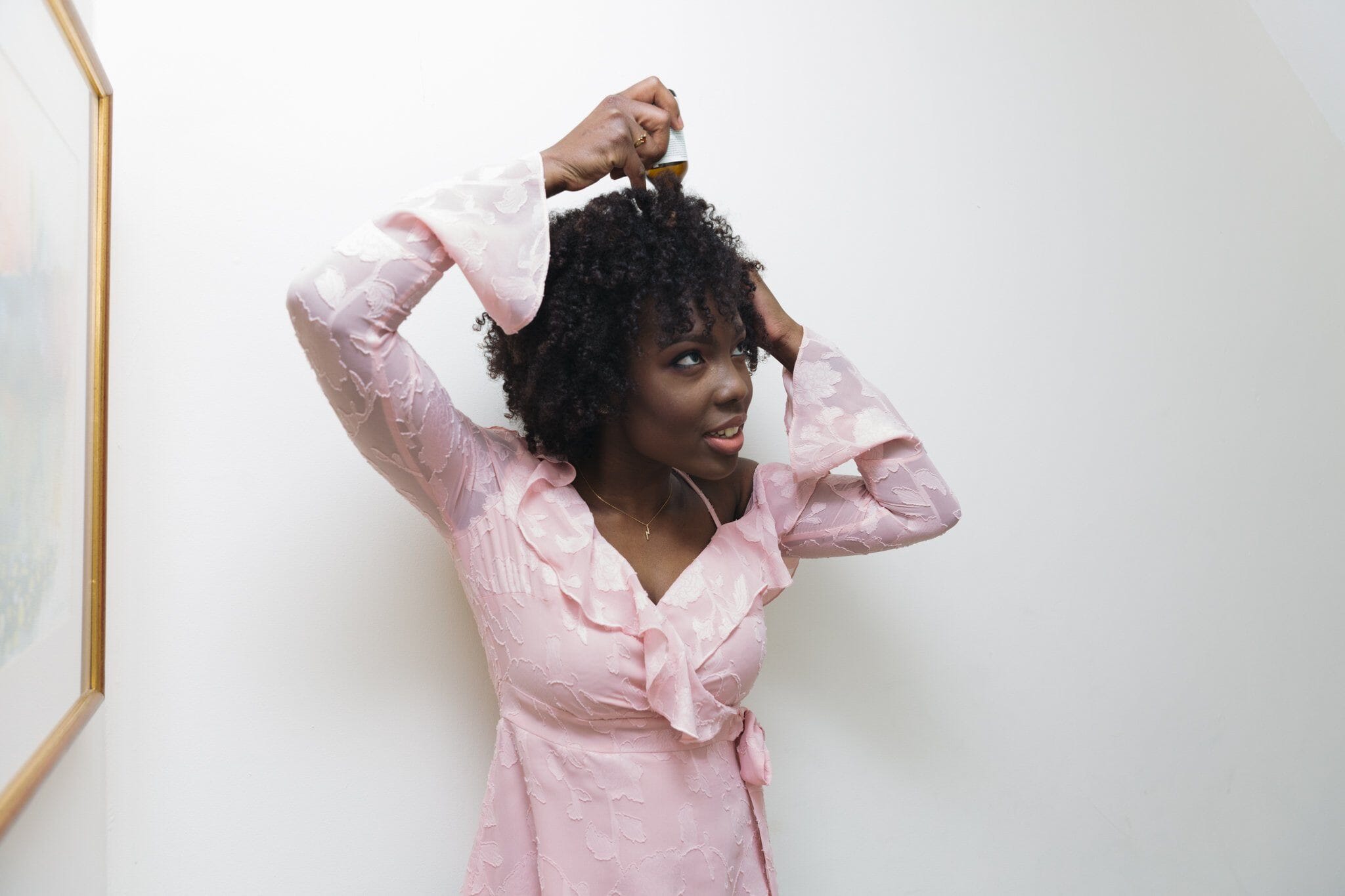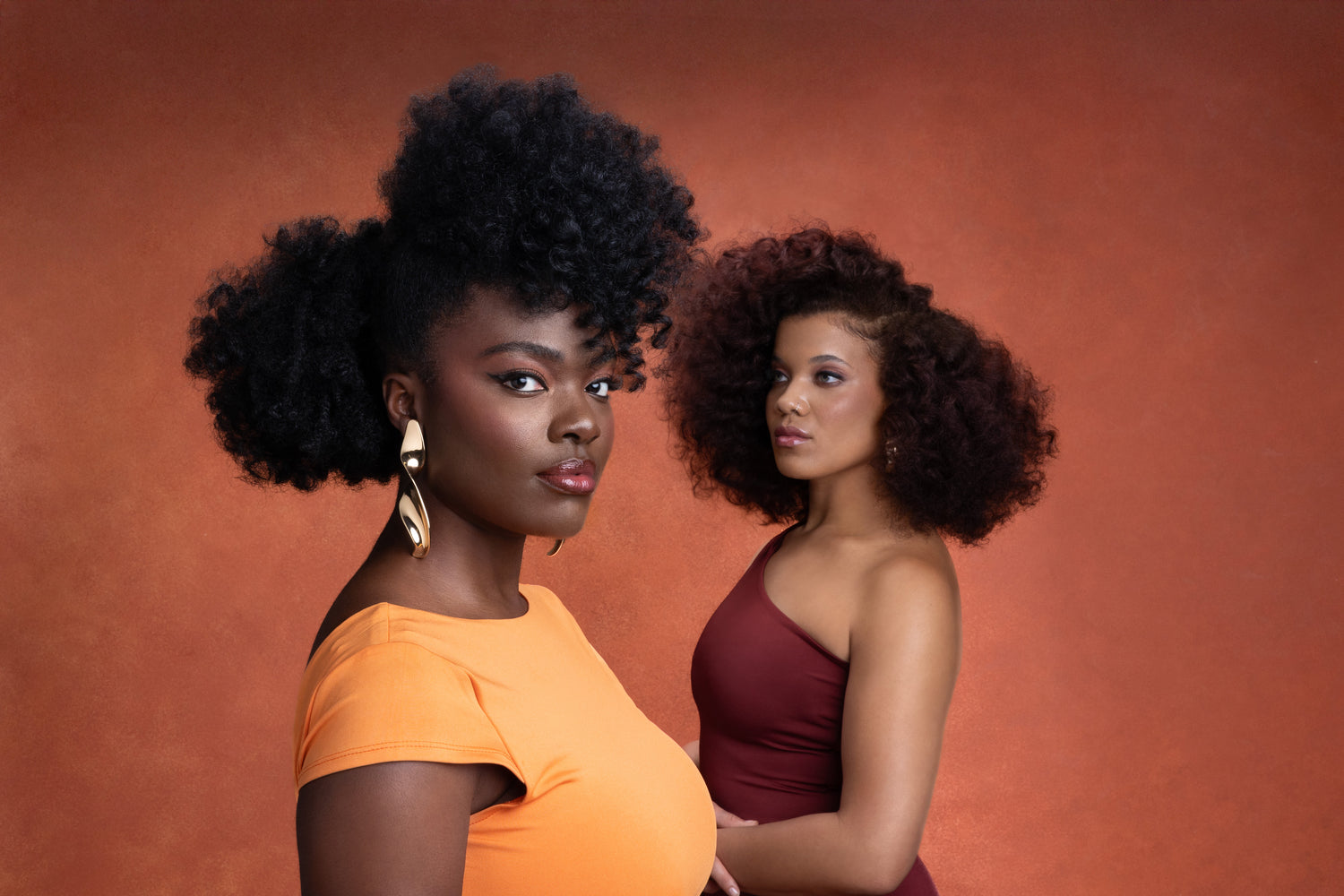Scalp buildup is an easy-to-solve scalp condition caused by a few, often overlapping, reasons. In this blog, we will look at how the scalp works, the different types of afro hair scalp buildup, what to do to treat it and how to prevent product buildup in the first place.
How the Scalp Works
Sebum (natural oil) overproduction can cause scalp buildup. Sebum is essential to protecting your scalp's skin surface. It forms an oily barrier between the skin, all that’s underneath it, and the environment.
Your scalp also produces eccrine sweat. This type of sweat is 99% composed of water and has an acidic pH value of 4.5-6. Sebum and sweat combined make up the “acid mantle” of the skin. This acid mantle protects and prevents against microbiological growth.
Types of Scalp Buildup
Overproduction of sebum that increases the growth of microorganisms
The overproduction of sebum and sweat reverses the effect of the “acid mantle” of the skin. It generally increases the colonisation and growth of microorganisms, more specifically, Malassezia spp.
Malassezia is a group of fungi that makes up 75% of the natural microorganisms of your skin. In conditions where overproduction of sweat and sebum is diagnosed, Malassezia increases by 1.5-2 times. This microorganism is also partly liable for another, more well-known scalp condition; dandruff. This kind of build up looks like soft, light yellow flakes.
Skin that doesn't shed its cells fast enough so layer after layer of “dead skin” builds up
It may be that your skin doesn’t shed its cells fast enough. Your skin cells go from being alive to dead within 30-40 days. During this time, your skin should shed the old, dead cells and replace them with the more alive ones. These will die by the time they reach the surface of your skin.
The shedding process doesn’t happen as quickly in the case of slow cell turnover. Thus, your dead cells are getting piled up layer after layer causing a build of “dead skin”. They often appear as yellow-white, thick, rough crusts.
Product buildup from applying products directly onto scalp or using a co-wash conditioner
Product build-up occurs when the scalp comes in continuous contact with products that aren’t meant for it. You may be co-washing with a regular conditioner or even a "co-wash" conditioner targeted towards afro and curly hair. The technology behind cleansing conditioners is recent and improvements in both formulation and marketing are required.
A co-wash product would feel stable, rich and creamy straight out of the bottle. A chemist would create a formula intended to provide deep conditioning and hair softening properties. Yet, if not rinsed off with a mild cleansing agent before adding other products, if left on too long it can be considered a potential irritant.
In addition, whatever product is applied on top of co-wash products, such as styling gel, edge control and moisturising creams cannot get activated. This build up has thin, white-yellowish flakes that make your hair look greasy. Build up forms layers on the cuticle and stops products from working on your hair.
How to Treat Scalp Build-Up
At Afrocenchix, we always stress the importance of a healthy, balanced hair care routine. It's crucial for a healthy scalp with no buildup - no matter what type of buildup it may be.
You should aim to wash your hair every 7-10 days using a mild, sulphate-free shampoo. This includes when you have your hair in a protective style. This will ensure that there is no scalp build-up, that you remove enough sebum, and that dirt and dust is gone.

The Science Behind Washing Your Hair
Washing and conditioning your hair work in tandem. A gentle shampoo or a sophisticated “co-wash” conditioner have cleansing agents that are majority anionic (have negative charge) or amphoteric (have both negative and positive charges but act as a non-ionic). The charges allow the shampoo to lift up the dirt and product build-up. Some of the charges are left on the hair and scalp.
After you rinse away the shampoo, the charges migrate onto your hair and your drain.
The rules of attraction apply for conditioners. The negative leftover charges from the mild shampoo/”co-wash” conditioner attract to the cationic surfactants of the conditioner. The natural oils are also deposited on the hair and scalp, some of which can actually penetrate the hair shaft.
After each treatment, you should rinse out the products to prevent possible buildup from the washing process itself. Try to make your rinsing time double than the lathering duration.
If you apply heat on your hair and still notice white, small flakes it means that you didn’t rinse out the materials enough and you heated them.
How Using Regular Conditioner as a Co-Wash Can Further Encourage Product Buildup
Conditioners have positive charges in them. When you massage these charges onto your scalp, they tend to stay on. They are not designed to stay on your skin for too long because they can irritate sensitive skin.
The regular conditioner applied has charge, irritating the skin which has no charge. Because of this your skin thinks that something is wrong, or that there is an “intruder”. It starts to give you external red flags such as itching, redness (erythema) and dry skin. Rinsing away built-up conditioner is not as easy. This is why you would need a harsher shampoo to lift off the buildup. Or better yet, use a milder sulfate-free shampoo with regular conditioner together more often.

Extra Protection from Scalp Build-Up
To further protect your scalp you can rub it with oily products to compensate for the sebum lost while shampooing.
Soothe was designed to help ease the itchiness that may have been caused due by scalp build up. Its anti-inflammatory properties also work to combat dryness and promote healthy hair growth.
If Scalp Build Up is Not Treated
You should treat this condition as soon as you identify or notice it. It can, in future, lead to other scalp conditions such as dandruff (micro-inflammation), seborrheic dermatitis (inflammation), folliculitis (inflammation), hair thinning and hair loss.
More articles:

